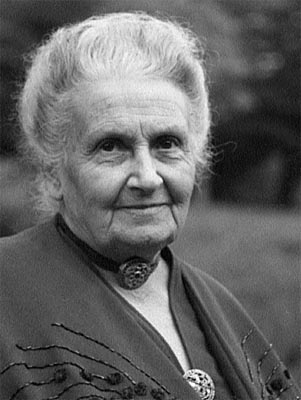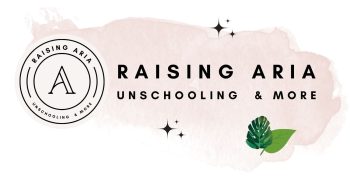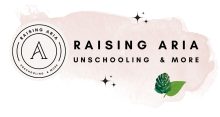This post is a collection of all important Montessori concepts that I have referred to in other posts, and after reading this post you’ll have a solid understanding of what Montessori is, who the founder is, what the prepared environment is and other areas of Montessori such as observation and following the child’s lead.
Part 1 – What is Montessori?
Montessori is a child-centered educational approach developed by Dr. Maria Montessori. It aims to support a child’s natural curiosity, independence, and desire to learn through hands-on experiences. Rather than being a rigid curriculum, Montessori is a philosophy that emphasises respect for the child’s unique pace of development and encourages self-directed learning.
What is The Montessori Method?
The Montessori Method is a form of education which is focused on self directed, self paced learning. An important concept in this education method is The Absorbent Mind, which refers to the child’s ability to absorb information in a sponge like manner.
At its core, the Montessori Method is about providing children with an environment that is carefully prepared to meet their developmental needs. It involves offering a wide range of age-appropriate materials and activities that children can freely choose from, fostering a sense of autonomy and responsibility.
Who Is The Founder of Montessori?

The founder of the Montessori Education Method is Dr Maria Montessori (1870–1952). Maria Montessori was born in 1870 in Italy and wanted to study Medicine. After initially being refused this male dominant field, Maria was given entry to the University of Rome in 1890 becoming one of the first women in medical school in Italy. Despite facing many obstacles due to her gender, Maria qualified as a doctor in July 1896.1.
You might wonder of Maria went from being successful at treating patients and being known for showing respect to patients from all walks of life, to becoming a founder of an education method. Well, in 1898 Maria gave birth to Mario and soon after that, in 1901 Maria began her own studies of educational philosophy and anthropology, lecturing and teaching students.
After that Maria opened the first Casa dei Bambini (Children’s House) bringing some of the educational materials she had developed at the Orthophrenic School (In 1897, Maria joined a research programme at the psychiatric clinic of the University of Rome, as a volunteer.). Dr. Montessori was determined to make the Casa a quality educational environment for these youngsters, whom many had thought were unable to learn—and she did.
To get a deeper understanding of Maria Montessori’s history and how the Montessori Method came about, you can read this article by the State University on Maria Montessori’s Biography (18 minute read) or read the Montessori Biography by Hills Montessori.
Key Principles of Montessori Education
Respect for the Child
Montessori views children as capable individuals with their unique strengths and interests. Respecting their choices, preferences, and abilities is fundamental to the Montessori philosophy.
Child-Led Learning
Unlike traditional education, where the teacher leads the class, Montessori places the child in the driver’s seat. Children are encouraged to follow their curiosity and interests, which leads to a deeper engagement in learning.
Following The Child’s Lead
Another aspect of the Montessori method is to follow the child’s lead. This means to observe the child, and noting down where they’re at developmentally. Each child is their own person and develops new skills and interests at their own pace.
For this reason we observe our baby on a regular basis (with monthly observations noted in her journal) and make a change to the environment, as to help her develop and offer what she is showing an interest in, whether that’s animals, musical toys, timber toys or household items.
Prepared Environment
Montessori classrooms and home environments are carefully designed to cater to a child’s physical, emotional, and intellectual needs. Order, beauty, and simplicity are essential elements that promote a calm and conducive learning atmosphere.
The Montessori Prepared Environment Explained + Tips For Creating Your Own.
Hands-On Learning
Montessori materials are specifically designed to be manipulative and engaging. Through hands-on experiences, children learn concepts and develop essential skills at their own pace.
Individualised Learning
Each child progresses differently, and Montessori recognises this fact. Individualised learning plans and one-on-one interactions with teachers allow children to explore subjects based on their readiness and interests.
How does Montessori differ from traditional education?
The main differences between Montessori and traditional education lie in their approach to learning and the role of the teacher. In traditional education, teachers often lead the instruction and follow a standardised curriculum, while in Montessori, the child takes an active role in their education, choosing activities based on their interests and developmental stage.
In Montessori, teachers (and parents) act as guides, observing the child’s progress, and offering gentle guidance and support when needed. They create a prepared environment that encourages exploration and discovery, while traditional education often focuses on imparting knowledge through lectures and textbooks.
Part 2 – The Absorbent Mind: Unraveling How Children Learn in Montessori
One of the most profound concepts in Montessori education is the “Absorbent Mind.” Dr. Maria Montessori identified this unique trait in children, describing it as a remarkable ability to effortlessly absorb information from their surroundings. In this article, we will delve into the concept of the Absorbent Mind, its impact on a child’s learning experiences, and explore practical examples of this extraordinary phenomenon in action.
What is the concept of the Absorbent Mind in Montessori?
The Absorbent Mind refers to the phase of a child’s development, typically occurring from birth to around the age of six, during which they possess an extraordinary capacity to assimilate knowledge and skills from their environment. Dr. Montessori observed that children in this stage are like sponges, effortlessly absorbing information without conscious effort or formal instruction. This innate ability is fundamental to their growth and lays the foundation for future learning.
How does the Absorbent Mind shape a child’s learning experiences?
During the Absorbent Mind period, children experience rapid cognitive, emotional, and physical development. The environment plays a crucial role in shaping their learning experiences. In a Montessori setting, the prepared environment is meticulously designed to cater to the child’s developmental needs, offering a wide array of purposeful materials and activities.
The Absorbent Mind allows children to:
a. Learn effortlessly: Children effortlessly internalise language, cultural norms, mathematical concepts, and various skills by merely being exposed to them in the prepared environment.
b. Develop their personalities: This sensitive period allows children to form their personalities, values, and character traits based on the interactions and experiences they encounter.
c. Cultivate independence: The Absorbent Mind fosters a sense of independence as children naturally gravitate towards activities that promote self-sufficiency.
d. Build a strong foundation for future learning: The knowledge absorbed during this phase serves as a strong basis for their future intellectual and emotional growth.
What are some practical examples of the Absorbent Mind in action?
Language Acquisition
During the Absorbent Mind phase, children effortlessly pick up languages spoken around them. They absorb vocabulary, sentence structures, and pronunciation through exposure, without the need for formal language lessons.
Order and Routine
Young children show a strong inclination towards order and routine, which they internalise by observing and imitating their caregivers and the structured environment of the Montessori classroom.
Developing Fine Motor Skills
Through the manipulation of Montessori materials, such as the knobbed cylinders or the pink tower, children enhance their fine motor skills and hand-eye coordination without conscious effort.
Social Skills
Children observe and internalise social interactions, empathy, and conflict resolution strategies from their environment, laying the groundwork for healthy relationships in the future.
The concept of the Absorbent Mind is a cornerstone of Montessori education, recognising and celebrating the extraordinary capacity of children to learn effortlessly and joyfully from their environment. By nurturing this innate ability through a thoughtfully prepared environment, Montessori empowers children to explore and discover the world around them, laying a strong foundation for a lifetime of curiosity and love for learning.
Part 3 – The Prepared Environment
In Montessori education, the prepared environment plays a pivotal role in shaping a child’s learning journey. Dr. Maria Montessori recognised that the environment has a profound impact on a child’s development, and thus, she meticulously designed classrooms to be harmonious, inviting, and conducive to exploration. In this article, we will explore the significance of the prepared environment in Montessori, how it facilitates learning, and identify some essential elements that make it a unique and enriching space for children.
What is the importance of the prepared environment in Montessori?
The prepared environment is the heart of Montessori education, serving as a “silent teacher” that guides a child’s learning experiences. It is carefully curated to cater to a child’s physical, emotional, and intellectual needs. By providing a structured yet flexible space, the prepared environment encourages children to explore, discover, and develop their innate potentials at their own pace. This environment fosters independence, concentration, and a sense of order, which are integral aspects of a child’s development.
How is the Montessori classroom designed to facilitate learning?
In a Montessori classroom, the design is intentionally focused on creating a calm and orderly atmosphere that nurtures a child’s natural inclination to learn. Some key aspects of how the Montessori classroom facilitates learning include:
Freedom of Movement
The layout of the classroom allows children to move freely and choose activities that pique their interest, promoting a sense of independence and responsibility.
Mixed-Age Grouping
Montessori classrooms often have mixed-age groups, enabling younger children to learn from their older peers and older children to reinforce their understanding by teaching younger ones.
Choice and Autonomy
Children have the autonomy to select activities that align with their interests and developmental stage, fostering a love for learning and self-directed exploration.
d. Hands-On Materials: The classroom is equipped with a wide range of hands-on Montessori materials, each designed to isolate a specific concept or skill, promoting active engagement and learning through direct experience.
What are some essential elements of a Montessori prepared environment?
a. Order and Beauty: The prepared environment is aesthetically pleasing and carefully organized, with materials neatly displayed on low shelves. Everything has a specific place, teaching children the value of order and respect for their surroundings.
b. Control of Error: Montessori materials are designed with built-in control of error, allowing children to self-correct their mistakes and learn through trial and error without constant adult intervention.
c. Nature and Natural Materials: The classroom often incorporates elements of nature, such as plants and natural materials, to bring a sense of tranquility and connection to the outside world.
d. Freedom within Limits: While children are encouraged to explore independently, the prepared environment also establishes clear boundaries to ensure safety and respect for others.
e. Grace and Courtesy: Montessori classrooms emphasise the development of social skills and mutual respect, with the teacher modelling grace and courtesy in interactions with children and encouraging the same from them.
The prepared environment in Montessori is a thoughtfully crafted space that empowers children to learn, grow, and thrive. By providing a nurturing and stimulating atmosphere, the Montessori classroom ignites a child’s innate curiosity and fosters a love for learning that extends far beyond their early years. With careful attention to every detail, the prepared environment lays the groundwork for a child’s lifelong journey of exploration and self-discovery.
Other Montessori inspired posts you may like
Our Montessori Inspired Movement Area and Playroom Setup For 8 Month Old Baby
Our Montessori Inspired Movement Area and Playroom Setup For 6 Month Old Baby
Our Montessori Inspired Floor Bed Setup for 6 Month Old Baby











[…] What is Montessori? […]
[…] What is Montessori? […]
[…] What is Montessori? […]
[…] What is Montessori? […]
[…] What is Montessori? […]
[…] What is Montessori? […]